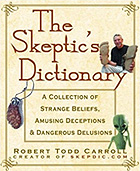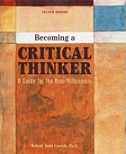Save on New or Used Textbooks!
why pay list price?
From Abracadabra to Zombies
The Skeptic's Dictionary Newsletter 84
October 15, 2007
"No study is so good that it is exempt from criticism." --Dr. Harriet Hall
In this issue:
- What's new
- Censorship lawsuits
- Inconvenient errors
- SAPS & TAPS
- Sensing murder
- Woo of the minute
- Nessie in crisis
- Chimps & chumps
- Logical Puzzles
- Amazing Meetings
What's New in The Skeptic's Dictionary & Skeptic's Refuge
There are three new entries in the Dictionary: Mothman, HIV/AIDS denial, and curse removal, cleansing scam.
Five Dictionary entries have been revised:
- The acupuncture entry was revised to include comments on a recently published study that some say shows acupuncture works and others say shows that it doesn't work.
- The pseudosymmetry of scientific authority entry was revised to include a clearer title and more examples.
- The haunted house and ghost entries were revised to make some sarcastic remarks about why ghosts like to appear in the dark instead of in daylight.
- The curse entry was revised to connect it to the new entry on curse removal.
There are five new posts in the What's the Harm? blog:
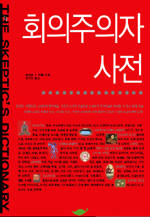 Seven entries were updated with links to news stories
or articles: remote viewing,
creationism,
intelligent design,
Kevin Trudeau,
Loch Ness "monster", and
crop circles.
Seven entries were updated with links to news stories
or articles: remote viewing,
creationism,
intelligent design,
Kevin Trudeau,
Loch Ness "monster", and
crop circles.
The Korean translation of The Skeptic's Dictionary is now available.
Order yours in time for the Korean New Year!
Using the law to stifle criticism by suing or threatening to sue critics is a tactic that has been used by individuals like Uri Geller and institutions like Scientology and Transcendental Meditation. The plaintiffs in such cases might claim they are concerned about their reputations, but their main concern could be to get publicity or to stifle criticism. Stuart Pivar's libel lawsuit against science blogger PZ Myers for calling his work "flagrant crackpottery" in a book review is a case in point. In Holland, it's illegal to call someone a "quack."* Myers may lose some sleep but he won't lose the suit if he gets the same judge that Ilena Rosenthal had when Stephen Barrett of QuackWatch and Dr. Terry Polevoy of Canadian Quackery Watch sued her. She stated publicly that:
Dr. Barrett is arrogant, bizarre, closed-minded; emotionally disturbed, professionally incompetent, intellectually dishonest, a dishonest journalist, sleazy, unethical, a quack, a thug, a bully, a Nazi, a hired gun for vested interests, the leader of a subversive organization, and engaged in criminal activity (conspiracy, extortion, filing a false police report, and other unspecified acts.)
Dr. Polevoy is dishonest, closed-minded; emotionally disturbed, professionally incompetent, unethical, a quack, a fanatic, a Nazi, a hired gun for vested interests, the leader of a subversive organization, and engaged in criminal activity (conspiracy, stalking of females, and other unspecified acts) and has made anti-Semitic remarks.
The good doctors lost. According to the judge in the case, these remarks were not defamatory.*
One can understand the desire to stifle criticism, whether the criticism is warranted or not, if that criticism destroys a person's reputation or takes money out of one's pockets by hurting one's business. Freedom of speech should not give one the right to slander or libel people, but it should give one the right to criticize others and their work. Even if one's criticisms are in error, if they are made in good faith, U.S. law is usually on the side of free speech.
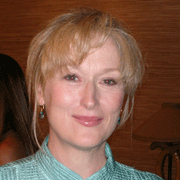 For
example, in 1989 the
Natural Resources Defense Council (NRDC), 60 Minutes, and Meryl
Streep could claim that the chemical Alar, sprayed on apples to regulate
their growth and affect their color, was poisoning our children, even though
the claim is highly dubious, as long as they acted in good faith. Streep probably
was acting in good faith; she has been unapologetic for her role in
destroying the livelihood of numerous families of apple growers in her
effort to protect children.* I can't speak for the
NRDC or 60 Minutes, but it would seem to me
that organizations with their power and resources should have been able to
get the science right. The Food and Drug Administration (FDA) wrote in 1989:
For
example, in 1989 the
Natural Resources Defense Council (NRDC), 60 Minutes, and Meryl
Streep could claim that the chemical Alar, sprayed on apples to regulate
their growth and affect their color, was poisoning our children, even though
the claim is highly dubious, as long as they acted in good faith. Streep probably
was acting in good faith; she has been unapologetic for her role in
destroying the livelihood of numerous families of apple growers in her
effort to protect children.* I can't speak for the
NRDC or 60 Minutes, but it would seem to me
that organizations with their power and resources should have been able to
get the science right. The Food and Drug Administration (FDA) wrote in 1989:
Data used by NRDC, which claims cancer risks from Alar are 100 times higher than the Environmental Protection Agency estimates, were rejected in 1985 by an independent scientific advisory board created by Congress. Alar has been used for decades in apple growing, and it has been the subject of many studies on possible harmful side effects.*
The Environmental Protection Agency (EPA) was aware of a study that had found that a breakdown product of Alar caused certain kinds of tumors in mice. That seems to be the evidence deemed sufficient by the NRDC and the 60 Minutes folks to justify their fear-mongering about Alar. The EPA stated that "the potential risk from Alar is not of sufficient certainty and magnitude to require immediate suspension of the use of this chemical." A single study on mice is certainly not sufficient to justify a panic, especially when the amount of Alar needed to produce tumors in the mice was judged to be equivalent to a human eating a boxcar load of apples or drinking 5,000 gallons of apple juice a day. Nevertheless, the EPA began a process to phase out the use of Alar. It is a carcinogen by definition if it can cause cancer in mice, and there may well be someone somewhere who would ingest enough of it to cause cancer. Even so, the FDA issued a statement encouraging "school systems and others responsible for the diets of children to continue to serve apples and other nutritious fruit to American children." However, a pleading infomercial featuring Meryl Streep and a convincing piece of fear-journalism by 60 Minutes based on the NRDC alarm trumped any government statements, no matter how sound the science those statements were based on. The result was irreparable harm to a number of family-run apple growers, although they put a dollar value on the damage done to them of $100 million in a lawsuit against CBS and NRDC, which was dismissed.* The critics were acting in good faith and were simply exercising their right to free speech. We now have food-libel laws in 13 states, as Oprah Winfrey found out when she said some negative things about beef on her TV show and was sued by some Texas cattlemen. She won, but she admitted that she was intimidated and emotionally affected by having to appear in court to defend herself for speaking her mind about not eating another hamburger since there was the possibility that the beef she'd be eating was infected with so called "mad cow disease." It's hard to feel sorry for Oprah, not just because she's filthy rich but because if she'd done a TV program on Alar she might well have had ten dying children wheeled out to the stage while she looked into the camera and said: "These innocent children are dying of cancer and they all ate apples."
So, where does Kwang Y. Cha, M.D., get off suing Bruce Flamm, M.D., for criticizing Cha's work published in the Journal of
Reproductive Medicine (vol 46. no. 9, September 2001)? The study was
called "Does Prayer Influence the Success of in Vitro Fertilization–Embryo
Transfer? Report of a Masked, Randomized Trial. " Cha was listed as an
author, as was Daniel P. Wirth, J.D., M.S., and Rogerio A. Lobo, M.D.
Flamm, M.D., for criticizing Cha's work published in the Journal of
Reproductive Medicine (vol 46. no. 9, September 2001)? The study was
called "Does Prayer Influence the Success of in Vitro Fertilization–Embryo
Transfer? Report of a Masked, Randomized Trial. " Cha was listed as an
author, as was Daniel P. Wirth, J.D., M.S., and Rogerio A. Lobo, M.D.
The design of the study has the marks of woo written all over it. A group of total strangers in the United States prayed for some women going to a fertility clinic in Korea (these women were called the experimental group), while nobody in particular prayed for another group of women going to the same fertility clinic (these women were called the control group). Neither "group" knew they were being studied, so neither gave consent to be prayed for or even knew that some folks in the U.S. were praying for their success in getting pregnant. (I put scare quotes around "group" because individuals went to the clinic and had no idea they were being randomly assigned by Wirth to be prayed for or not.) Technically, this violates the medical researchers' code of ethics, which forbids involving people in experiments without their consent. Since I don't think prayer has any effect on anything except perhaps making the one doing the praying feel better, I'm not going to quibble about not getting consent to be prayed for or not. In any case, the experimental group had a 50% pregnancy rate versus 26% for the control group. The probability of this difference being due to chance was calculated by the authors as being greater than one in a thousand (p=.0013). The probability of this difference being due to the prayers of a group of strangers in the U.S. is easier to calculate. Try putting a string of zeroes after another string of zeroes.
Anyway, the article went through peer review and was published. After publication Mr. Wirth was indicted and is now eating his meals in federal prison. He entered a plea of guilty to conspiracy charges in connection with a $2 million business fraud in Pennsylvania. Wirth has used a series of false identities for several decades, including that of a dead child. He has a law degree and a master’s in parapsychology from John F. Kennedy University, but has no medical qualifications. He has co-authored numerous pieces of research claiming to prove paranormal activities. He headed something called Healing Sciences Research International, which appears to have been nothing but a mailing address. Dale Beyerstein of the University of British Columbia has been investigating the work of Wirth and his frequent partner in crime, Joseph Horvath, for several years. He likens them to a pair of conmen.*
After Wirth was indicted, Dr. Lobo of Columbia University, a respected scientist who was named initially as the lead author of the research, announced that he had provided only "editorial review and assistance with publication." He asked that his name be removed from the study. Lobo's lab was not involved in the study in any way and his name never should have been on the paper.
That leaves Cha alone to stand for the integrity of the data and the study. Last spring, Cha was charged by the editor of the journal Fertility & Sterility with plagiarizing a paper he published in that journal. Cha allegedly threatened the editor with legal action and the editor, Alan DeCherney, subsequently retracted comments he made to The Scientist.com and to the Los Angeles Times. The Times had written:
Dr. Kwang-Yul Cha, whose company also owns fertility clinics and a large hospital in Seoul, is listed as the primary author on a medical paper that appeared in December 2005 in the U.S. medical journal Fertility and Sterility.
But that paper appears to be nearly a paragraph-for-paragraph, chart-for-chart copy of a junior researcher's doctoral thesis, which appeared in a Korean medical journal nearly two years earlier, according to a Times review of both papers and the findings of a Korean medical society.*
After Wirth went to prison, Flamm stated that he was "concerned this study could be totally fraudulent." But Flamm has been publicly criticizing the article in the Journal of Reproductive Medicine since its publication. It is possible that Flamm's mentioning of the charge of plagiarism in his latest public request that the article by Cha and Wirth be publicly rejected by the new editor of the journal (which has not happened) and removed from the online version of the Journal of Reproductive Medicine (which has happened) is what motivated Cha to sue Flamm for defamation. Who knows?
As far as I can tell regarding the fertility prayer study, there is no evidence that Cha is guilty of anything but (1) immorality for not making sure that consent forms were signed by those in the study, (2) naivety for thinking prayer might help get people pregnant, and (3) gullibility for trusting Wirth, who is the one who provided Cha with “a roster of the women he said had been prayed for” when they met at a Starbucks on the Upper West Side in New York.* Other than these three items and the charge of plagiarizing a graduate student's paper, Cha seems like a standup guy.
If any fraud was committed it was by Lobo or Wirth, who provided the crucial data and who has a history of fraud. However, just because he has been guilty of fraud in the past doesn't prove he committed fraud here. Still, I wouldn't put much faith in any data he provided.
Dr. Lobo initially indicated he was the lead author when he wasn't. Is that fraud? I don't know. Let's ask some strangers to pray for him and see what happens. Meanwhile, I hope he doesn't sue me for raising the question.
update: Court Vindicates Doctor Who Questioned Pregnancy "Miracle" Report, Throws Out Kwang Yul Cha's Lawsuit
 In
response to the ruling, Dr. Flamm issued the following statement: "Today's
ruling is a victory for science and evidence-based medicine. Scientists must
be allowed to question bizarre claims. Cha's mysterious study was designed
and allegedly conducted by a man who turned out to be a criminal with a
20-year history of fraud. A criminal who steals the identities of dead
children to obtain bank loans and passports is not a trustworthy source of
research data. Cha could have simply admitted this obvious fact but instead
he hired a team of lawyers to punish me for voicing my opinions. Physicians
should debate their opinions in medical journals, not in courts of law.
Judges have better things to do with their time and taxpayers have better
things to do with their money."
In
response to the ruling, Dr. Flamm issued the following statement: "Today's
ruling is a victory for science and evidence-based medicine. Scientists must
be allowed to question bizarre claims. Cha's mysterious study was designed
and allegedly conducted by a man who turned out to be a criminal with a
20-year history of fraud. A criminal who steals the identities of dead
children to obtain bank loans and passports is not a trustworthy source of
research data. Cha could have simply admitted this obvious fact but instead
he hired a team of lawyers to punish me for voicing my opinions. Physicians
should debate their opinions in medical journals, not in courts of law.
Judges have better things to do with their time and taxpayers have better
things to do with their money."
new To read an interview with Dr. Flamm, click here.
update: 12 Feb 2010. California's highest court puts an end to suit against critic of prayer study Cha appealed the court's vindication of Dr. Flamm to the California Supreme Court, which refused to hear the case, vindicating Flamm once again. Cha will be required to pay about $100,000 for Flamm's legal costs.
In England, Stewart Dimmock sued the Department for Children, Schools and Families for showing Al Gore's film "An Inconvenient Truth." Dimmock believes the film is propaganda and violates some parts of the Education Code. A few days before Gore won a share of the Nobel Peace Prize for his work on spreading the good news about climate change, a judge ruled that the film has nine errors in it. The judge ruled that the film could be shown in schools as long as a list of the nine errors was provided with each showing. I wonder, is it required to provided a list of errors when reading the Bible to schoolchildren or when showing a film like "The Ten Commandments"?
Dimmock and his lawyers were ecstatic that the judge found nine errors. Gore must make over a thousand claims in his film. I'd say nine errors is not so bad for such a complex issue and such a large number of assertions. In 1949, Milton Mayer analyzed a page-one story in the Chicago Tribune of about 2,500 words and found 122 inaccuracies and distortions in it. (“How to Read the Chicago Tribune,” Harpers Magazine, April, 1949, pp. 24-35.) I've probably made more than nine errors in this newsletter. So, sue me!
I first heard of SAPS while listening to a Skepticality podcast. Hosts Derek and Swoopy sang the praises of Alison Smith, the founder of the Skeptical Analysis of the Paranormal Society. The name seems to be purposely ambiguous. On the one hand, the group seems to have been founded to debunk the work of TAPS, the Atlantic Paranormal Society. On the other hand, the group is a society that does skeptical analyses of paranormal claims.
Smith is a licensed private investigator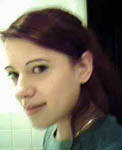 and her
group does such things as create video footage that debunks some alleged
paranormal event one might see on a television show like "Ghost Hunters" on
the SciFi channel. For an example of their work, see Alison's article in eSkeptic: "TAPS vs.
SAPS - The Atlantic Paranormal Society meets the Skeptical Analysis of the
Paranormal Society." At the very least, Alison has exposed some very
funny monkey business going on at TAPS, which throws into question the
validity of all of their alleged investigations into the paranormal.
Unfortunately, being exposed as being less than honest in their
investigations will probably not hurt the paranormal society from selling
its wares to the highest bidder, who will overlook such minor details as
not being completely accurate as long as the footage is entertaining to a
particular audience.
and her
group does such things as create video footage that debunks some alleged
paranormal event one might see on a television show like "Ghost Hunters" on
the SciFi channel. For an example of their work, see Alison's article in eSkeptic: "TAPS vs.
SAPS - The Atlantic Paranormal Society meets the Skeptical Analysis of the
Paranormal Society." At the very least, Alison has exposed some very
funny monkey business going on at TAPS, which throws into question the
validity of all of their alleged investigations into the paranormal.
Unfortunately, being exposed as being less than honest in their
investigations will probably not hurt the paranormal society from selling
its wares to the highest bidder, who will overlook such minor details as
not being completely accurate as long as the footage is entertaining to a
particular audience.
By chance, I happened to catch a few minutes of the TAPS boys doing their thing for the SciFi channel. They were investigating the Queen Mary, now docked in Long Beach, California, for ghosts. How? They have flashlights, tape recorders, EMF detectors, video cameras with night vision, and other devices that were not designed to detect ghosts and therefore have no instructions on how to use them for that purpose. (I know. There is no equipment designed for this purpose. How could there be?) The equipment looks scientific, but I was disappointed that the TAPS boys didn't wear white lab coats and carry clipboards. They don't look very professional, though they did wear their baseball hats with the bills pointed forward. I turned the show off when some guy from the Presidio in San Francisco (a place I have been to and through dozens of times) was introduced as a historian with a Ph.D. I wondered where he got his degree when he started showing great enthusiasm about the TAPS guys doing a "scientific" investigation of the haunted places in the Presidio. He could have at least asked: "How do you detect a ghost with a Sony?" In any case, I can say with confidence that the majority of people in San Francisco do not worry about ghosts in the Presidio.
New Zealand could use a group like SAPS to combat the nonsense being spread by the producers of a television program called "Sensing Murder." These folks take their psychic detective rubbish so seriously that they post responses intended to explain why psychics don't go after prize money offered to them if they can prove their paranormal ability. They claim their psychics don't need to be tested because the evidence is in and is overwhelming. Only an idiot could deny that psychic ability is real! Still, that doesn't answer the question: why not go for the money?
This show also airs in the U.S. on the Discovery Channel and in Australia, and was based on a show originally produced in Denmark.*
For those who can't get enough of this kind of programming, the Lifetime Channel now offers "America's Psychic Challenge." Sixteen self-professed psychics compete to see who's the best at such things as guessing facts about a celebrity behind a wall. In one episode, the celebrity is Lifetime's own psychic Lisa Williams. I'm not making this up.
Reconnective therapy
is this minute's winner, nominated by Rocky. Invented by
homeopath and student of
cranio-sacral therapy
Herwig Schoen, this therapy involves shifting frequencies within the
physical body. In case you are wondering, you have at least two bodies, the
physical and the energy body. The
energy body "builds the physical body and holds the templates for perfect
body and mind structure and function. It contains all our feelings,
thoughts, memories, and possible futures. We lose our well being when
connections between the energy body and the physical body are broken." Who
knew? If you're not sure what Herwig is saying, this diagram will clarify it
all for you.
winner, nominated by Rocky. Invented by
homeopath and student of
cranio-sacral therapy
Herwig Schoen, this therapy involves shifting frequencies within the
physical body. In case you are wondering, you have at least two bodies, the
physical and the energy body. The
energy body "builds the physical body and holds the templates for perfect
body and mind structure and function. It contains all our feelings,
thoughts, memories, and possible futures. We lose our well being when
connections between the energy body and the physical body are broken." Who
knew? If you're not sure what Herwig is saying, this diagram will clarify it
all for you.
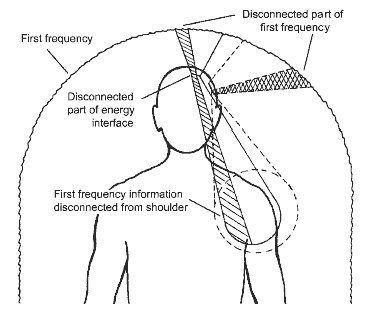
Got it? Don't ever disconnect your first frequency! It could be fatal. Or not.
The second place award for woo this minute goes to
Kinoki detox foot pads.
The demo on their web site may look like the pads are just removing dirt from the bottoms of your feet, but
there is more here than meets the eye! Using a special "double-distilled
bamboo vinegar" and "negative ions," the Kinoki pads suck toxins out of your
body, allowing you to "combat fatigue and even lose weight." The pads are
especially recommended for those who suffer from migraines, arthritis, or
terminal gullibility.
like the pads are just removing dirt from the bottoms of your feet, but
there is more here than meets the eye! Using a special "double-distilled
bamboo vinegar" and "negative ions," the Kinoki pads suck toxins out of your
body, allowing you to "combat fatigue and even lose weight." The pads are
especially recommended for those who suffer from migraines, arthritis, or
terminal gullibility.
On the 28th of September, the Nessie page had some 20,000 page views, about 100 times the usual daily traffic for that page. The only news story I could find that came close to the timing for the sudden surge in interest in the Loch Ness creature was posted in Times Online and several other places in the UK on the 28th and 29th (the UK is 8 hours ahead of PST). The story reports that the number of Nessie sightings has dropped off significantly in recent years and this is having a major impact on the local tourist industry. There have only been five sightings in the past two years. A decade ago, there might have been 40 sightings over a two-year period. One explanation for the drop in sightings is that people are more skeptical of what they see and more aware that they may be tricked by visual illusions. That would be a good thing but it would be a blow to the local economy. The more sightings, the more interest; the more interest, the more tourists; the more tourists, the more money. Of course, true believers think there are other reasons for fewer sightings. Some think Nessie has been driven into hiding by low-flying RAF fighter jets. Others blame increased pollution. Some think she might be dead. Perhaps she's been abducted by aliens for reproductive experimentation or is auditioning for one of the new psychic-themed television shows.
Economists and political scientists have noted that human behavior is often irrational, i.e., not in one's self-interest. Now some researchers have discovered that chimpanzees are more rational than humans when it comes to making choices that are in their interest.
Researchers from the Max Planck Institute of Evolutionary Anthropology in Leipzig studied the chimp's choices when they receive something of value and can then either keep it all or share it with another. If they don't share, neither chimp gets anything.*
In similar experiments, humans typically make offers close to 50 percent of the reward. They also reject as unfair offers of significantly less than half of the reward, even though this choice means they get nothing.
Chimpanzees, however, make offers of substantially less than 50 percent and accept offers of any size, no matter how small. For this the researchers declare them more rational than humans. Humans, it seems, are more concerned with fairness than with getting something for nothing. Or something like that.
The 71st edition of the Skeptic's Circle is up at Infophilia. The theme this week is logical puzzles.
The James Randi Educational Foundation has announced two upcoming Amazing Meetings. TAM 5.5 will be held in Ft. Lauderdale on January 26, 2008. The theme is Skepticism and Activism. TAM 6 will be held at the Flamingo Hotel in Las Vegas from June 19-22, 2008. There are no details about TAM 6 yet, but an ad in the latest issue of Skeptic magazine promises "new guest speakers and new activities." The theme of Skeptic this quarter is medical controversies and it has three fine articles by Harriet Hall, M.D. I highly recommend these articles for those interested in medicine and critical thinking.
* AmeriCares *


